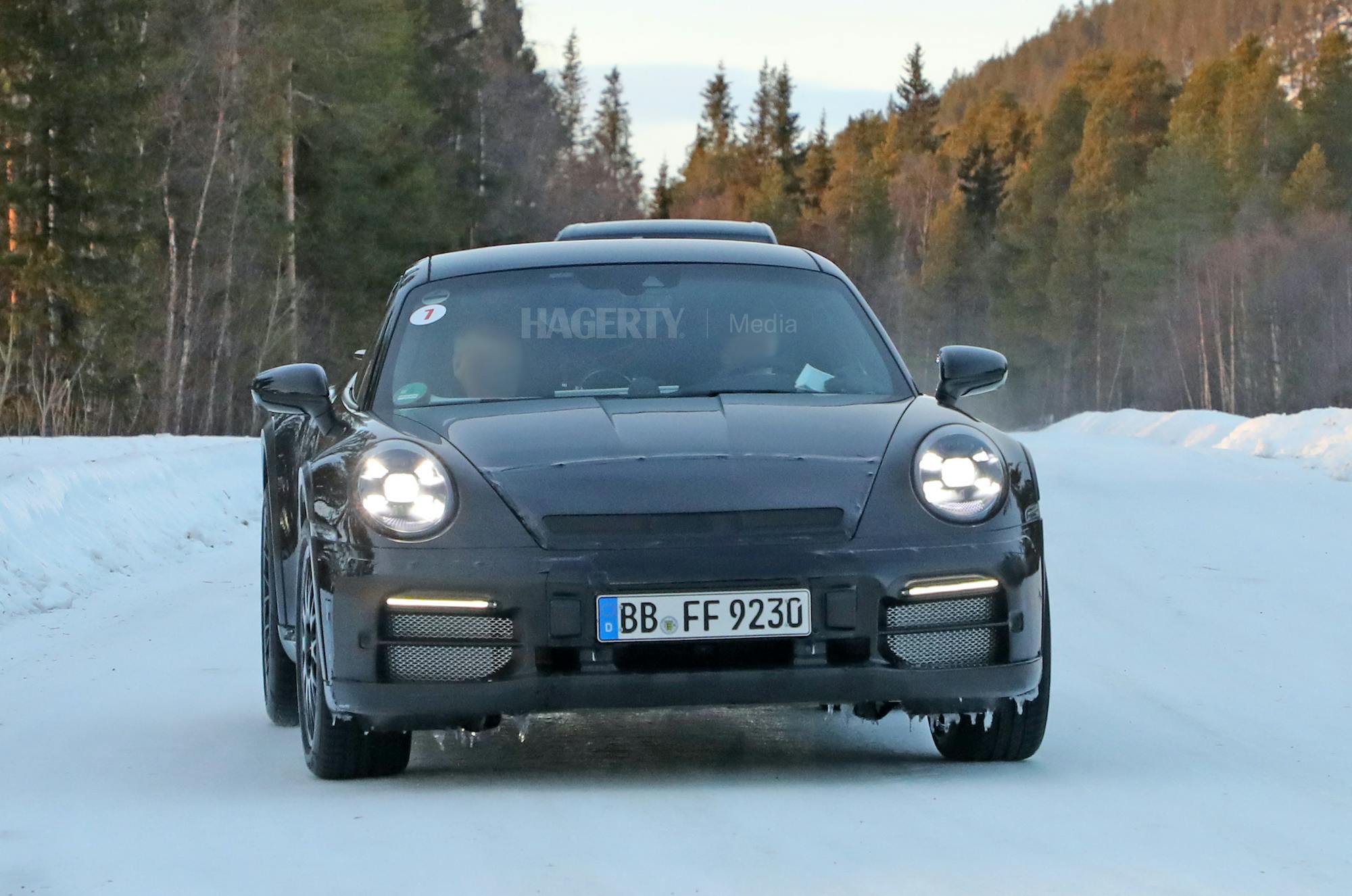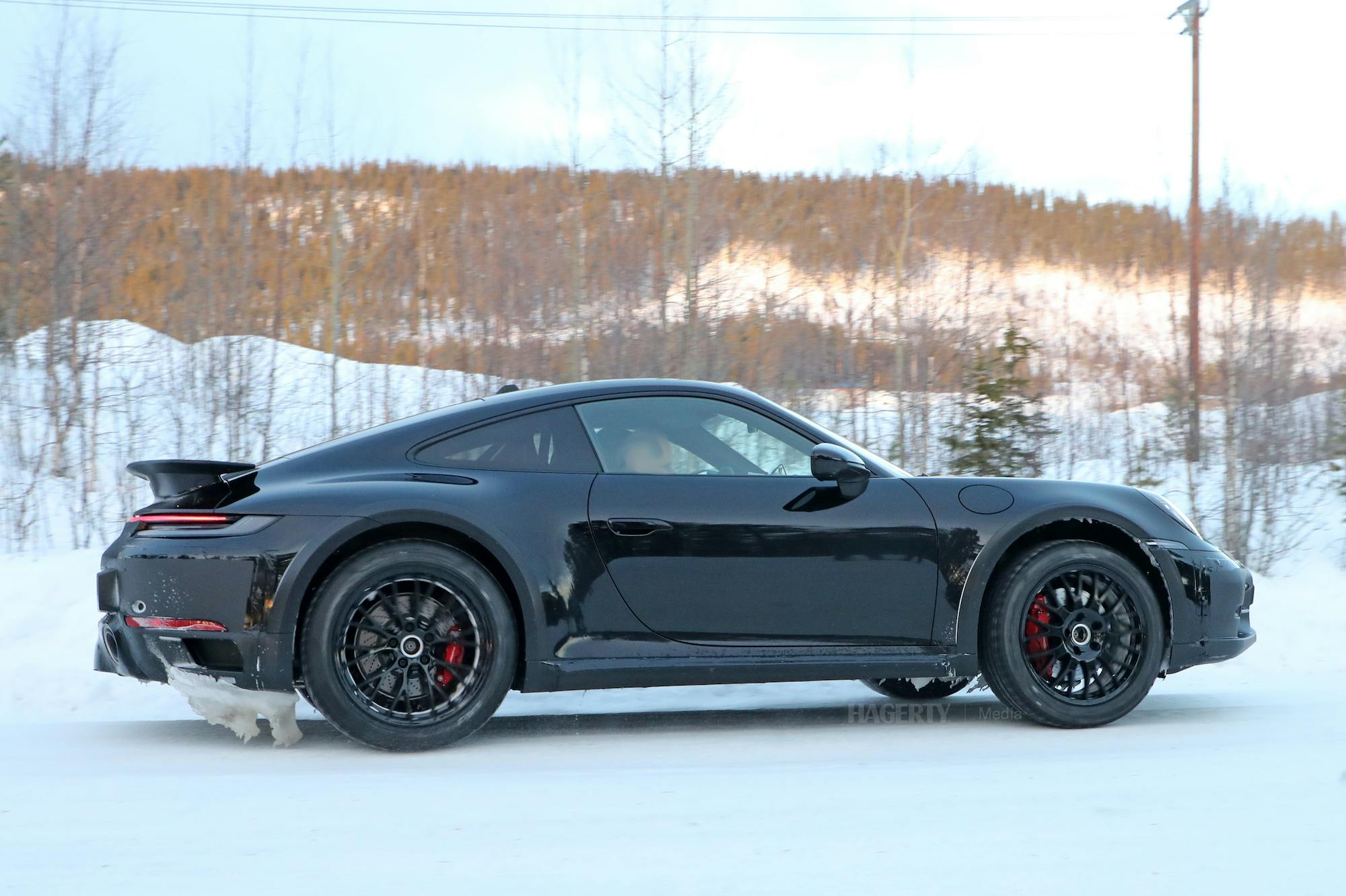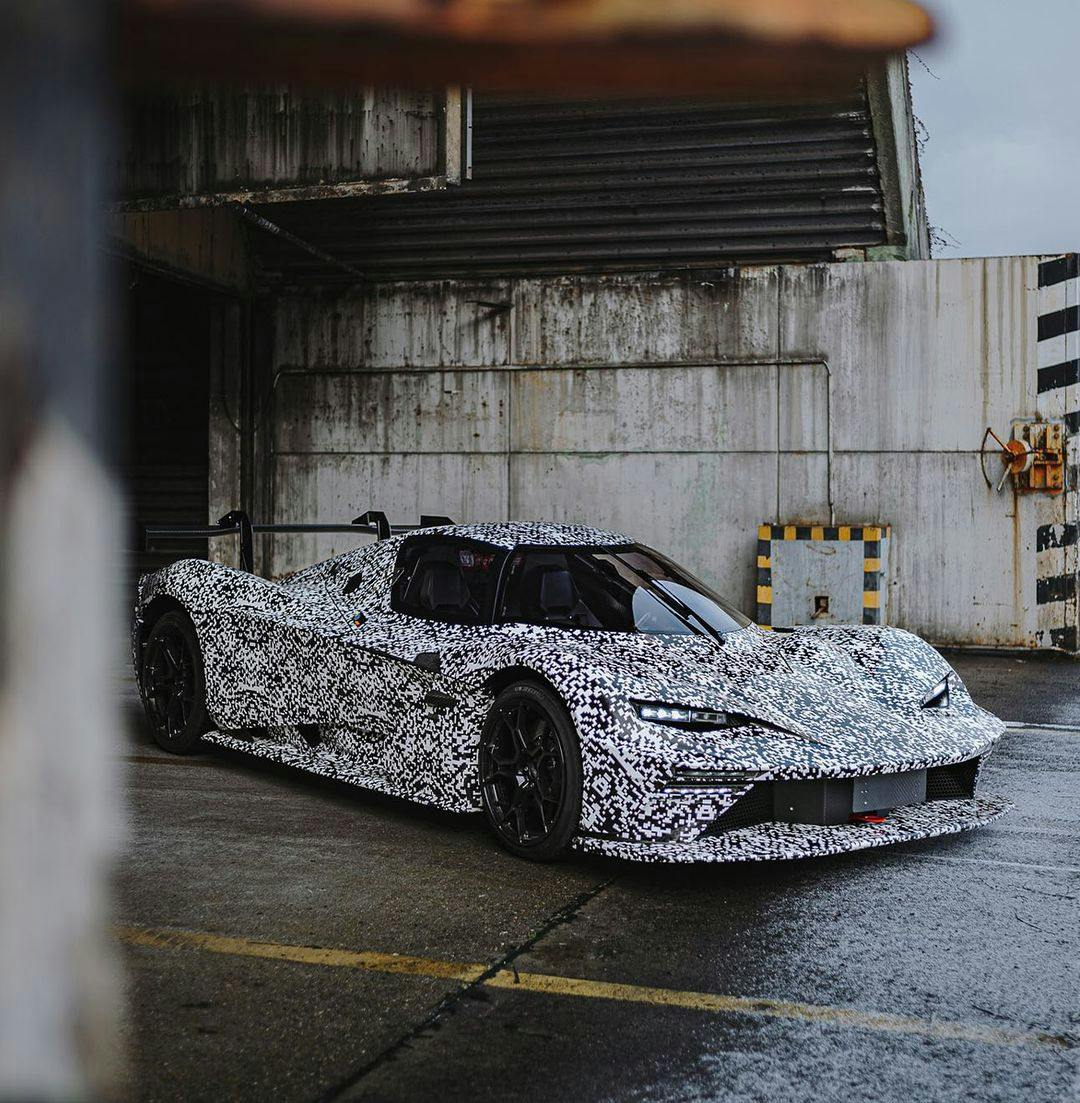Porsche’s off-roading 911, GM earmarks $7B for Michigan, Bugatti’s not done with ICE
Porsche schemes to take the 911 off-road
Intake: Spy photographers recently spotted an essentially production-ready Porsche 911 Safari out completing some winter testing. From the images, we can see that this prototype sports an increased ride height, new front and rear bumpers that appear mildly tucked to increase ground clearance at either end, and large wheels shrouded by plastic wheel arches. There’s speculation that rather than call it a 911 Safari, Porsche will dub this the 911 Dakar, no doubt a homage to its many years racing advanced machinery in the grueling desert rally.
Exhaust: From Gemballa to Singer to well-known specialty shops, everyone’s been going crazy for the 911 safari recipe recently. Clearly, Porsche sees no reason why the aftermarket should have all the fun. As to its official name, consider this a counterpoint to the Dakar label: Porsche recently debuted a slightly lifted, plastic-clad version of the Taycan called the Taycan 4 Cross Turismo. Could this 911 don the Cross Turismo sub-brand and preview a niche lineup of cars aimed at your local dirt roads? We’re into it.
GM earmarks $7B investment for Michigan-based EV production

Intake: Brace yourself for some big numbers. GM has just announced the largest-ever single investment in its history: $7B to invest in electric-vehicle production in its home state of Michigan. The eye-popping allocation will be funneled into three separate ventures: $4B to convert GM’s Orion Assembly plant (located ~40 miles north of Detroit) from Bolt to electric truck production (specifically, the electric Chevy Silverado and GMC Sierra), $2.6B to found a new Ultium Cells battery plant in Lansing, Michigan’s capital; and the remaining $510 million or so to upgrade a pair Lansing-adjacent plants. Lansing Delta Township Assembly will get retooled for the next-gen Traverse and Enclave, and Lansing Grand River Assembly, which currently builds vehicles based on the GM Alpha platform (Cadillac’s CT4 and CT5 sedans plus the Camaro), will receive unspecified “upgrades.” No word on a BEV Camaro, for now.
Exhaust: GM is betting big. Not only does the General want half of all its North American manufacturing capacity to be slated for electric vehicles by 2030, it wants to be the EV market leader in North America by 2025. Pickups (plus the Hummer SUV), and a second generation of the Bolt EV will form the vanguard of its product offerings. Will they take the U.S. by storm? You, the customer, will be the judge.
EV evangelist Mate Rimac wants the next Bugatti to be ICE-driven
Intake: Bugatti Rimac boss Mate Rimac may be the maker of the world’s wildest electric vehicles, but he says that he is actually “pushing for a combustion engine” for the Chiron’s successor. In a video statement the CEO adds that he believes there is a future for internal combustion at Bugatti and that the world will be “astonished” by the company’s next model. That’s not to say the Chiron’s replacement won’t feature some form of electrification to go beyond the 1577 hp of the current Super Sport 300+ but fans will be reassured to know that the wonderful W-16 will live on.
Exhaust: Bugatti’s shift to full electrification is inevitable but who can fail to be excited about one last huzzah for one of the most incredible combustion engines the world has ever seen—Bugatti’s eight-liter, quad-turbo W-16?
KTM wants its track-weapon X-Bow to hit the streets
Intake: The KTM X-Bow GTX is targeted as the ultimate track weapon for those in pursuit of the last tenth on a closed circuit. In a recent Instagram post, the Austrian brand teased a shift for the model by using the hashtag “hitting the streets.” Taking a track focused machine and making it street legal has its own set of hurdles, but also comes with some bonuses including opening the model to compete in GT classes.
Exhaust: KTM’s GTX is not alone in the hyper-track focused segment, and KTM is likely to learn something that rival brands Radical and Westfield already know: It is tough to make a race-track special into a street car. Internet commenters will ask for a no-compromises race car on the street, but it will be interesting to see whether the KTM balances the two different tasks any better than others that tried before it.
The first battery-powered Bentley will arrive in 2025

Intake: Bentley has confirmed the timeline for its first fully-electric vehicle. As part of an announcement of a $3.4 billion investment in sustainability over the next ten years the British luxury car maker said that it will enter the market with a battery-electric Bentley in three years’ time. Bentley says that this will “mark a significant moment in Bentley’s long and illustrious history” and is a “critical step” in the company’s Beyond100 strategy which will see Bentley become all-electric and end-to-end carbon neutral by the year 2030. CEO Adrian Hallmark added, “Our aim is to become the benchmark not just for luxury cars or sustainable credentials but the entire scope of our operations. Securing production of our first BEV in Crewe is a milestone moment for Bentley, and the UK, as we plan for a long-term sustainable future in Crewe.”
Exhaust: Bentley’s take on a new kind of sustainable luxury goes beyond just carbon emissions. The Crewe plant is already carbon neutral but plans for a Dream Factory will ultimately see it become a zero waste facility, so Bentley buyers can keep driving with a clean conscience.






















